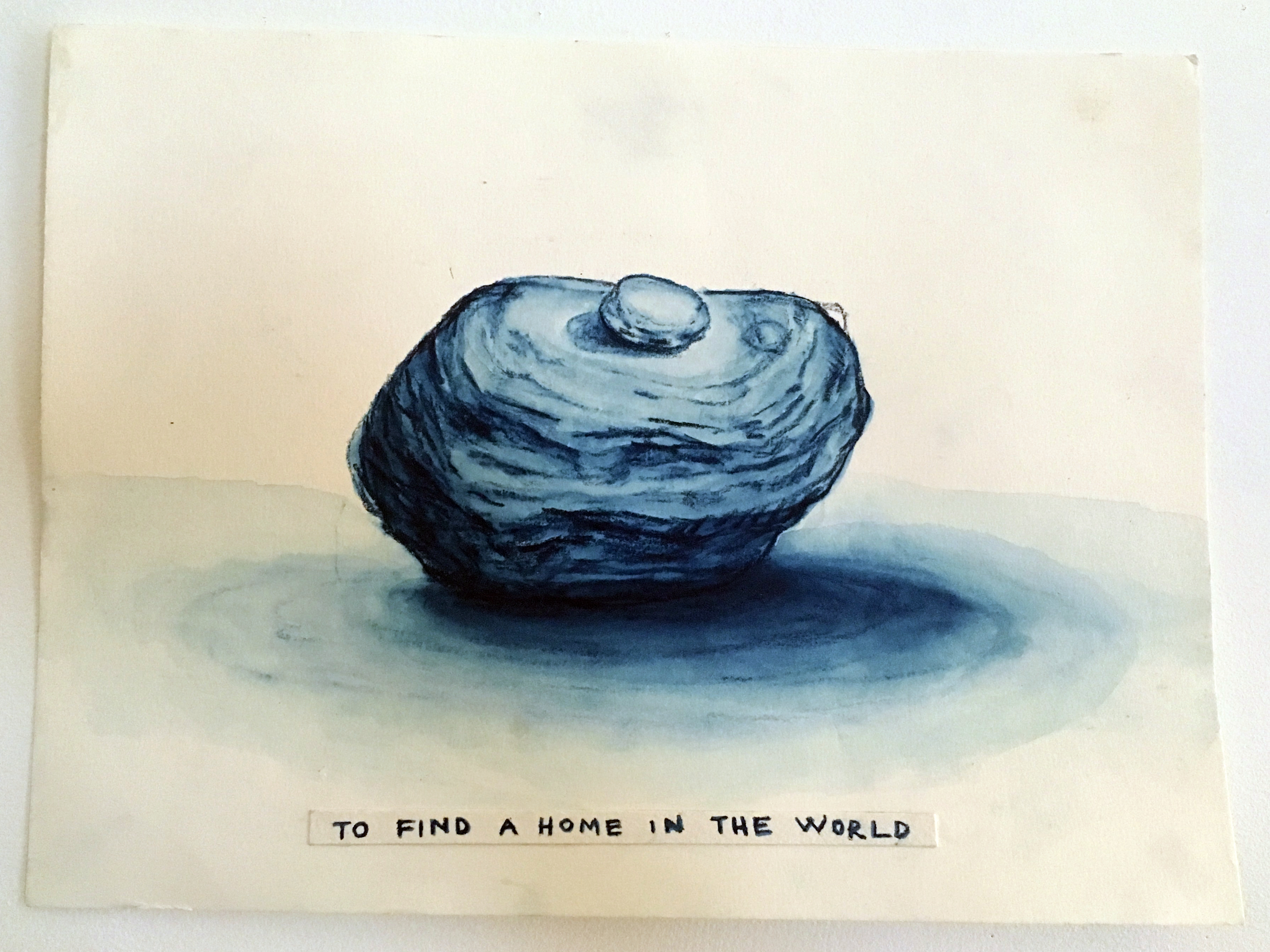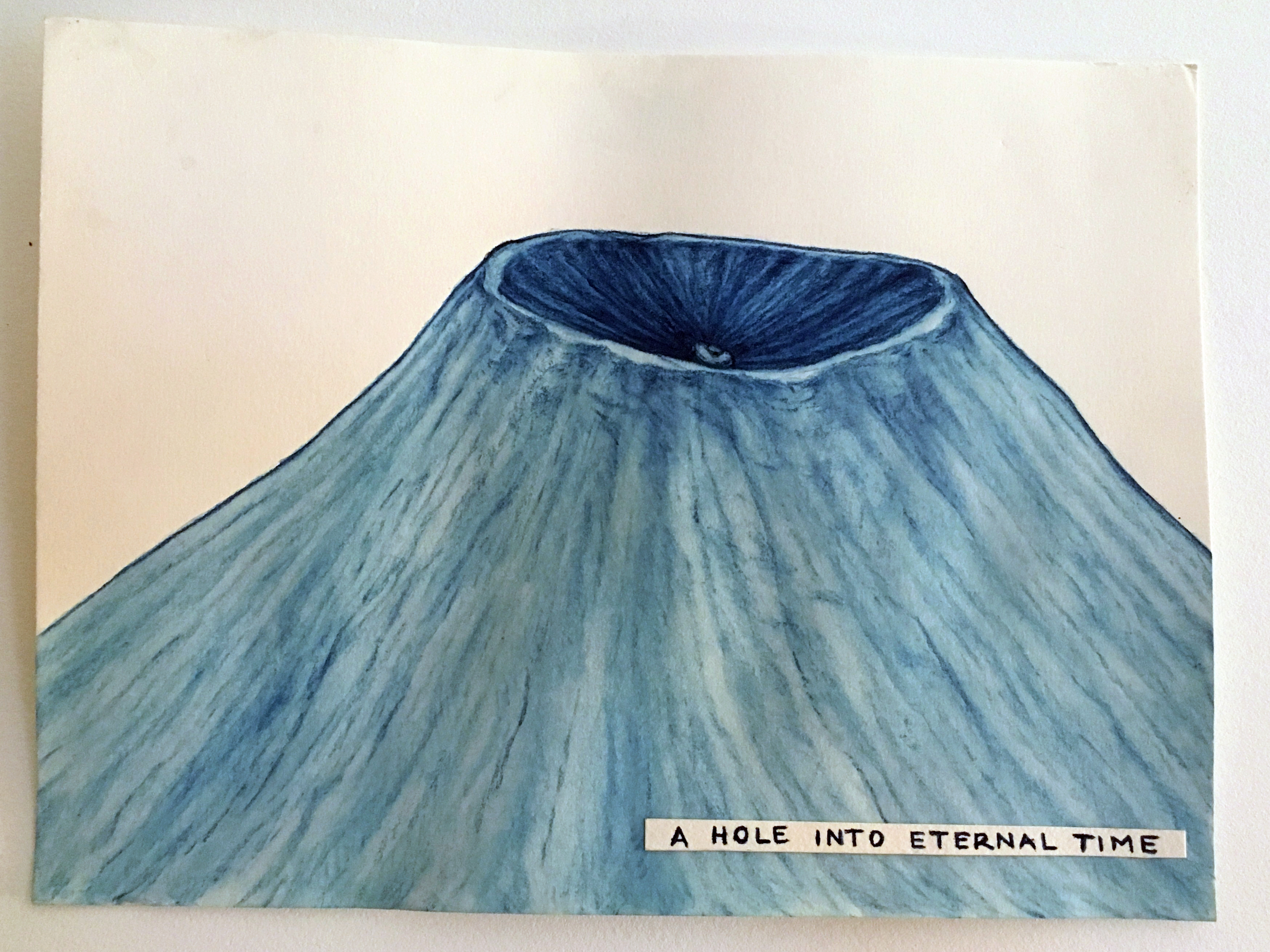
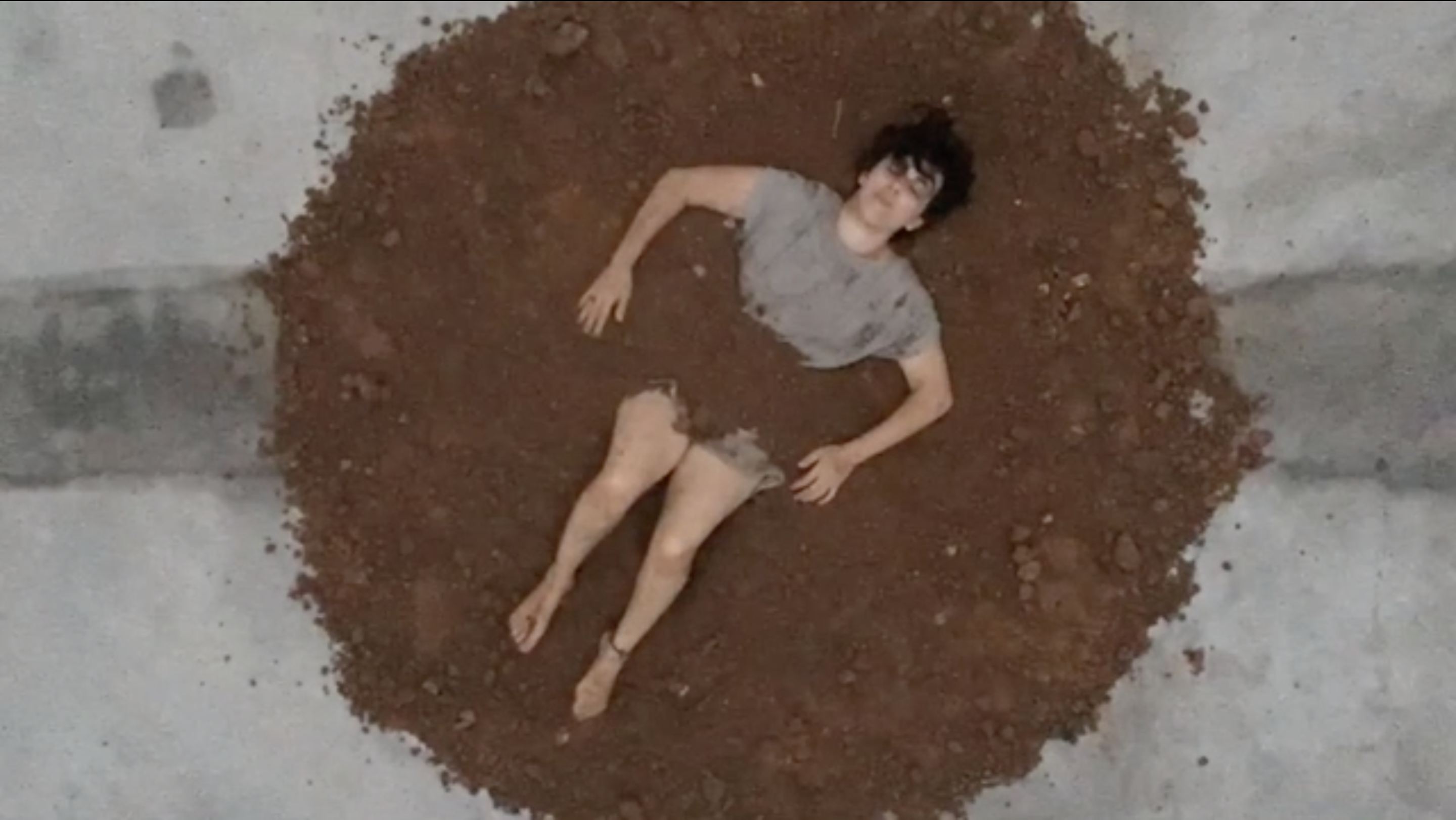
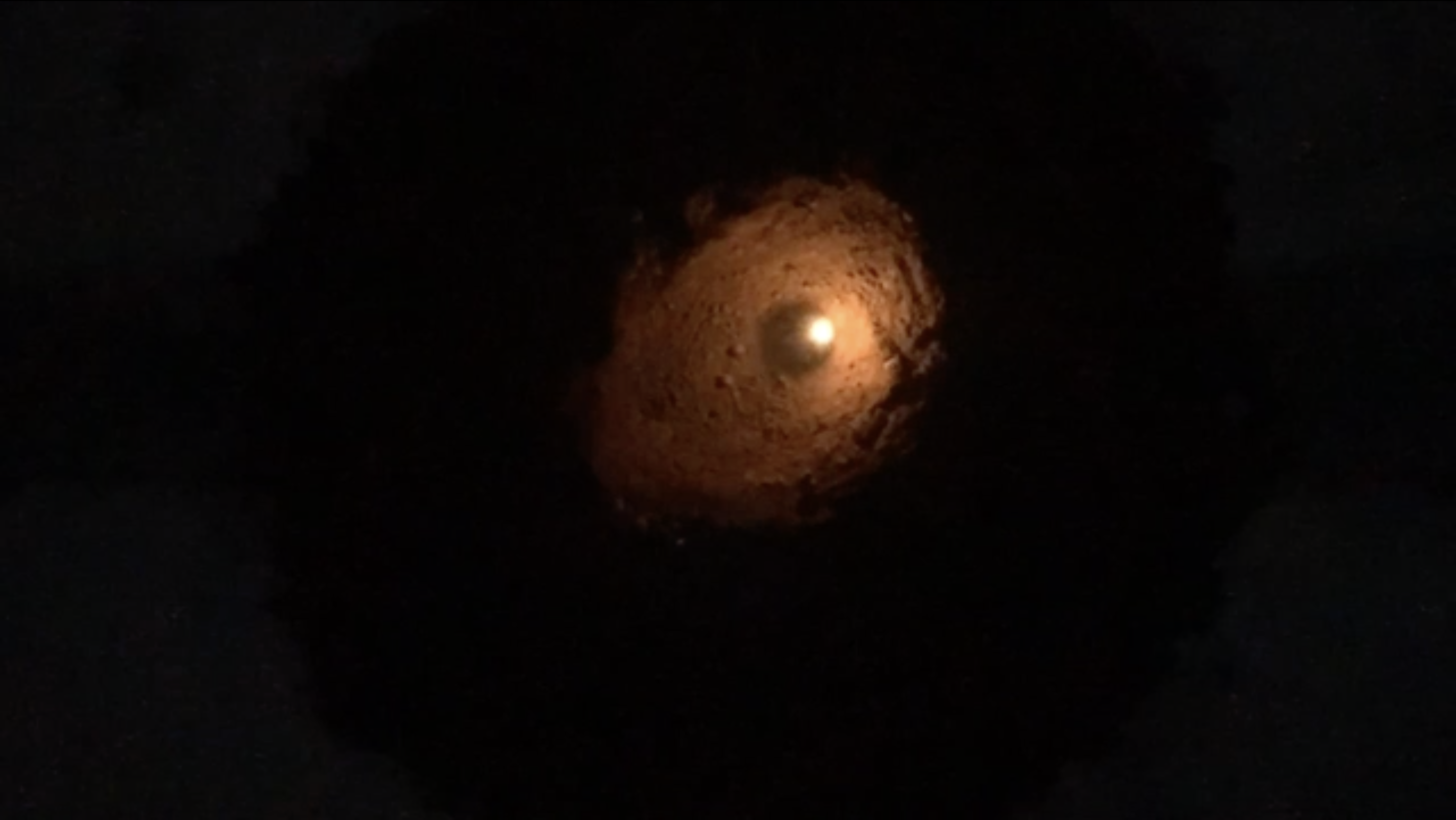
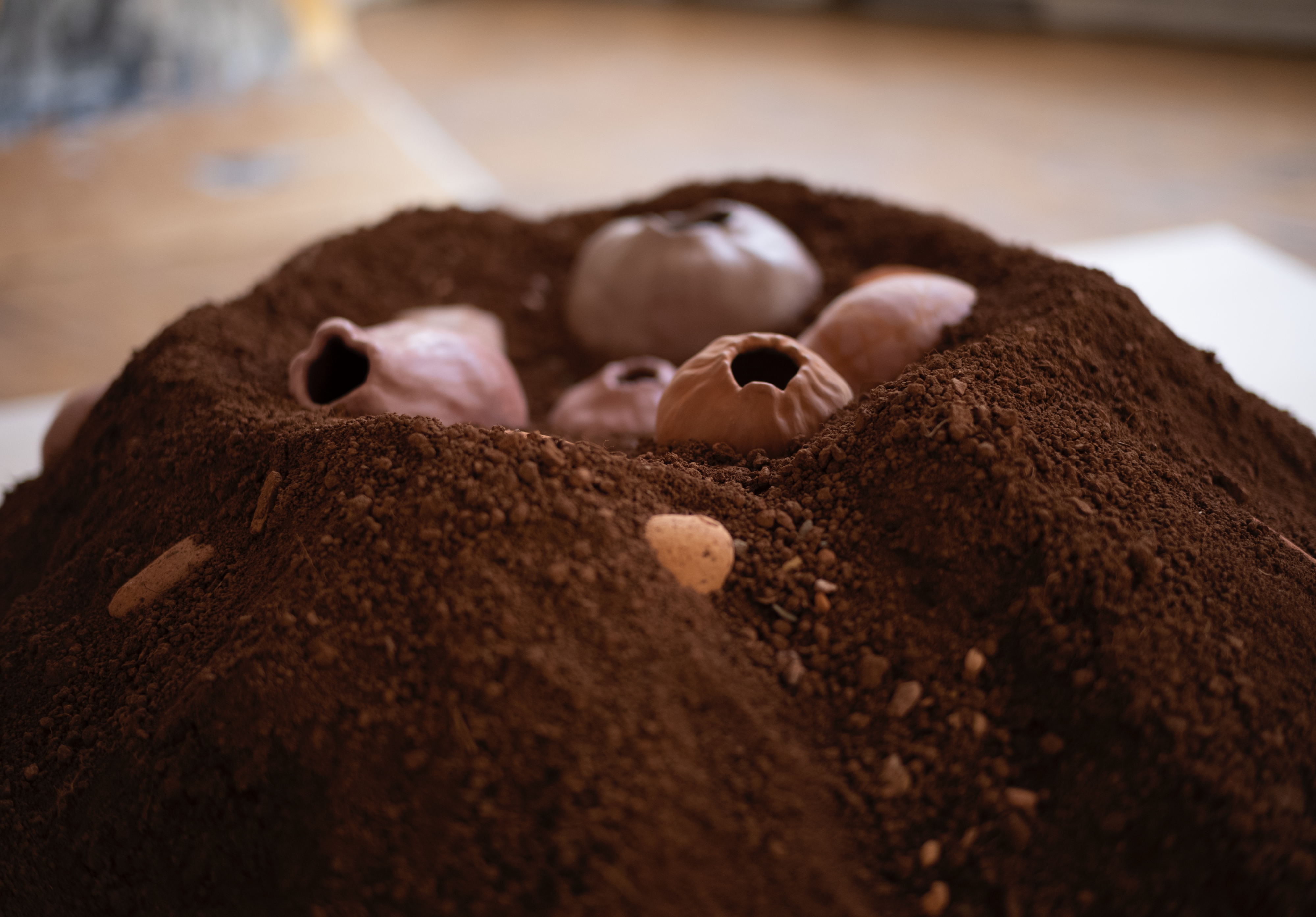


The performance and its consequent installation is the outcome of a one month residency, reconnecting the artist with her hometown and research on its foundational site. The studies of the knoll where the city began started in 2013 for her first solo show, where she conducted investigative walks from the center of the knoll to the city’s outskirts. Inhampabuassu (the Eye of the Earth in Tupi-Guarani language), is a location where displacement, bloodshed and subsequent monuments teach us about historical amnesia and the shared stories of colonization across the Americas.
For this residency, she researched the symbolic force of this ancestral site and the symbology of its original name (a fact little known by most of its inhabitants). The work relates to the artist’s ongoing research on “navels” of the land, sites that give birth to places and their myths across multiple cultures. Reflecting on São Paulo’s navel, a symbolic knoll was created in the center of the residency exhibition room, made with the city’s natural soil (disposed by construction sites). While creating a direct relationship with raw earth, the perfomance reconnects body, place and matter, an act of reconnection with the land, its ancestrality and the sense of belonging.
The work was reenacted and evolved into a new version in the context of The Clemente Building, in New York, part of the Subversive Kin ehxibition, curated by Elisa Gutierrez.
- video performance, click here
- catalog of Subversive Kin, click here
– text by curator Julie Dumont on the residency, click here


